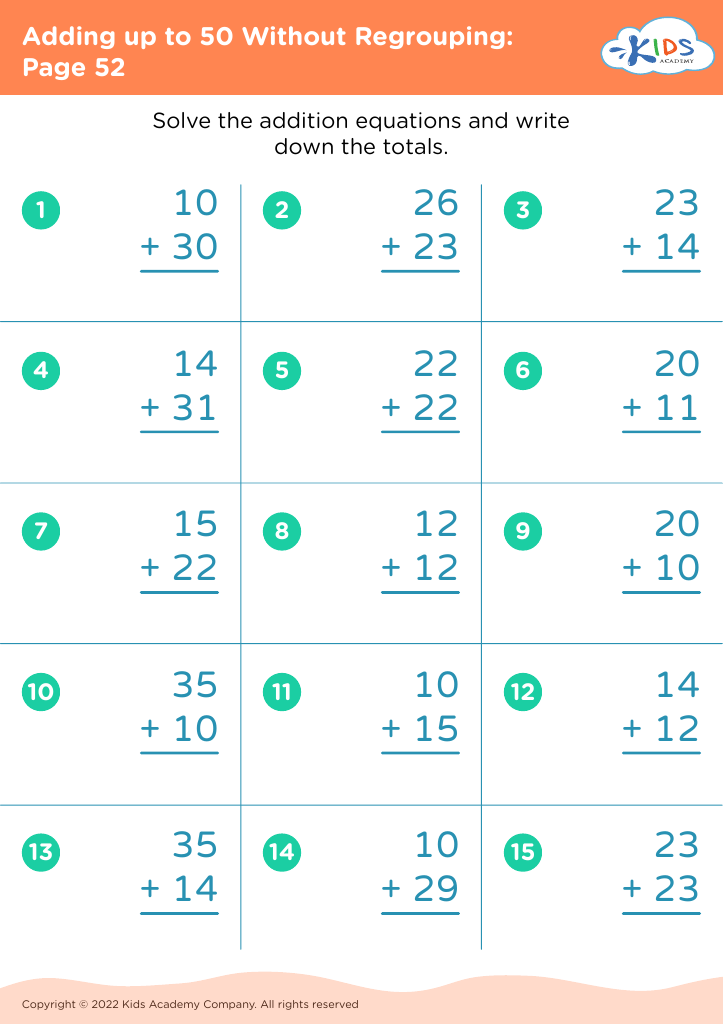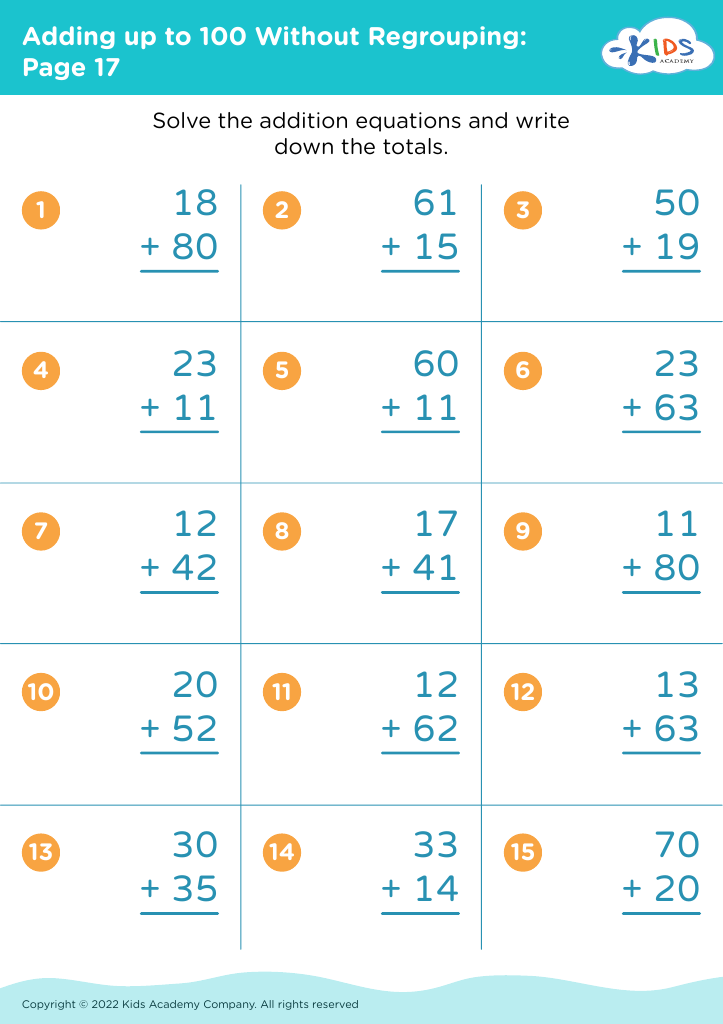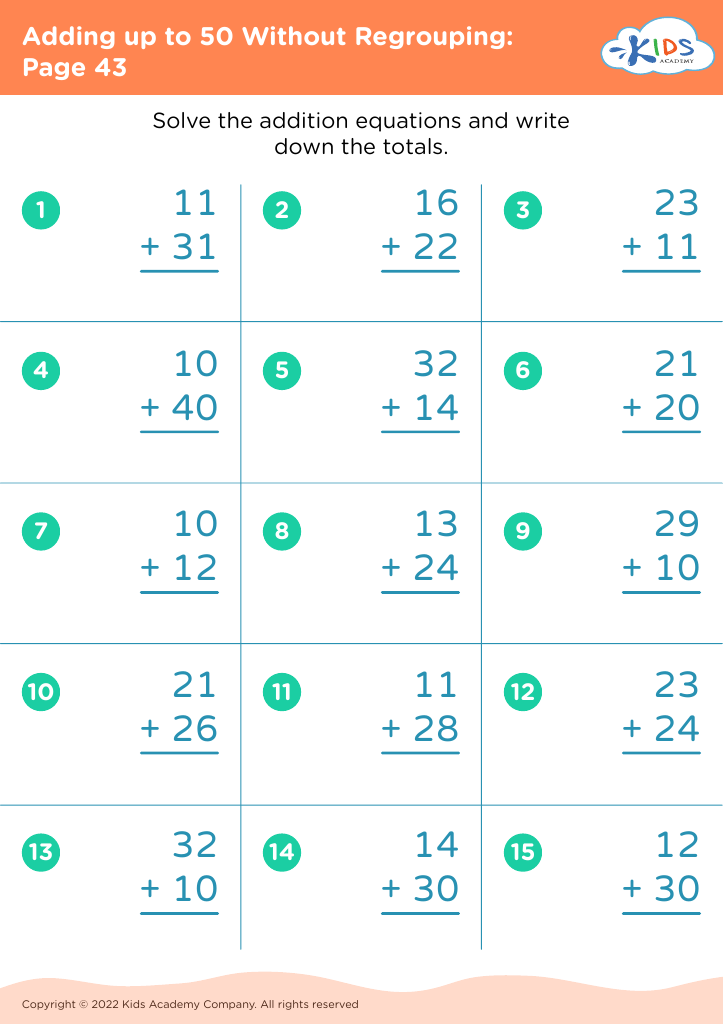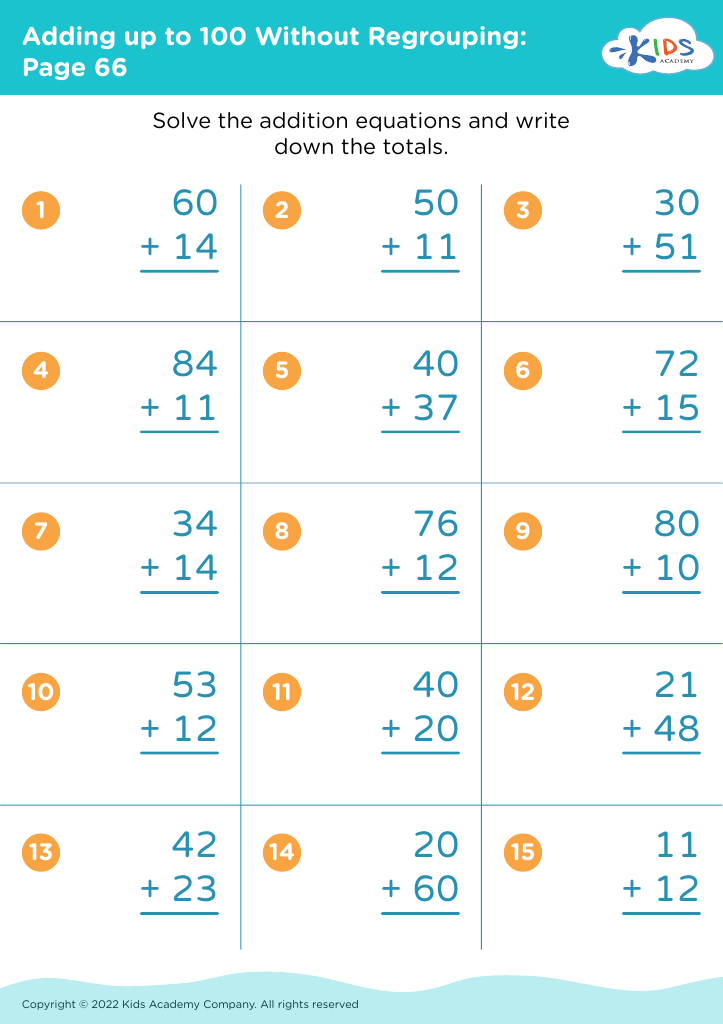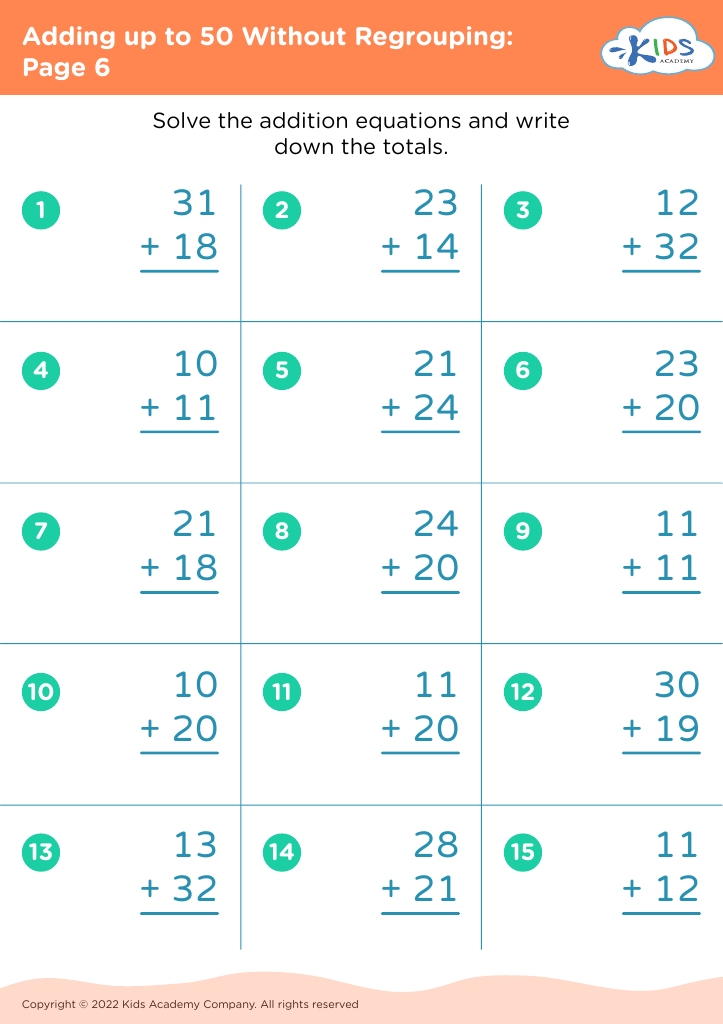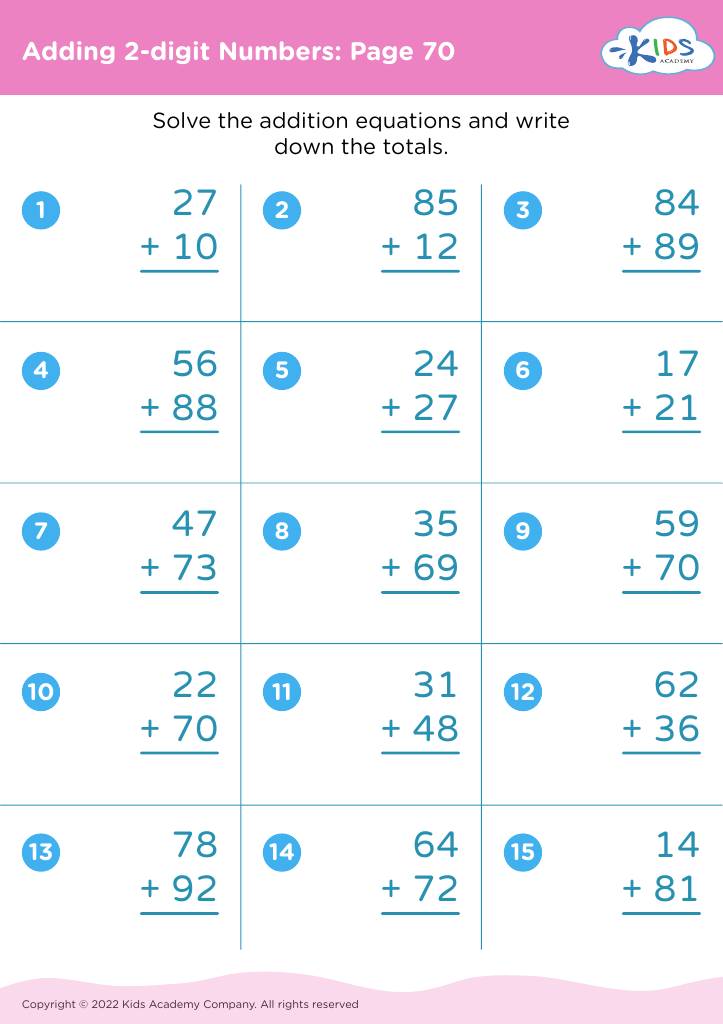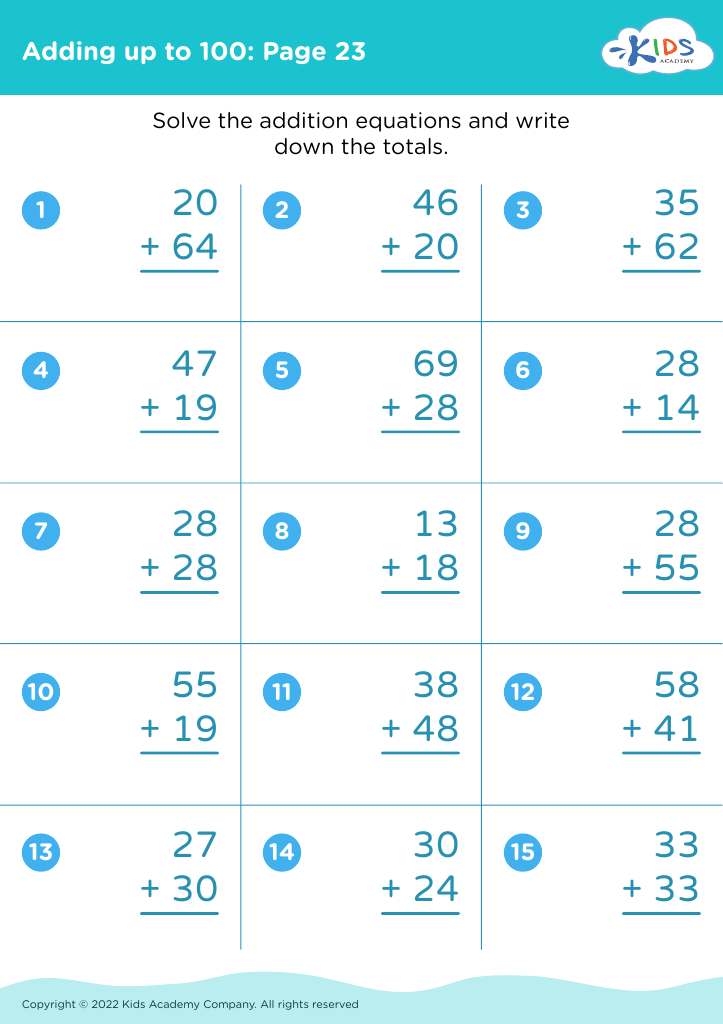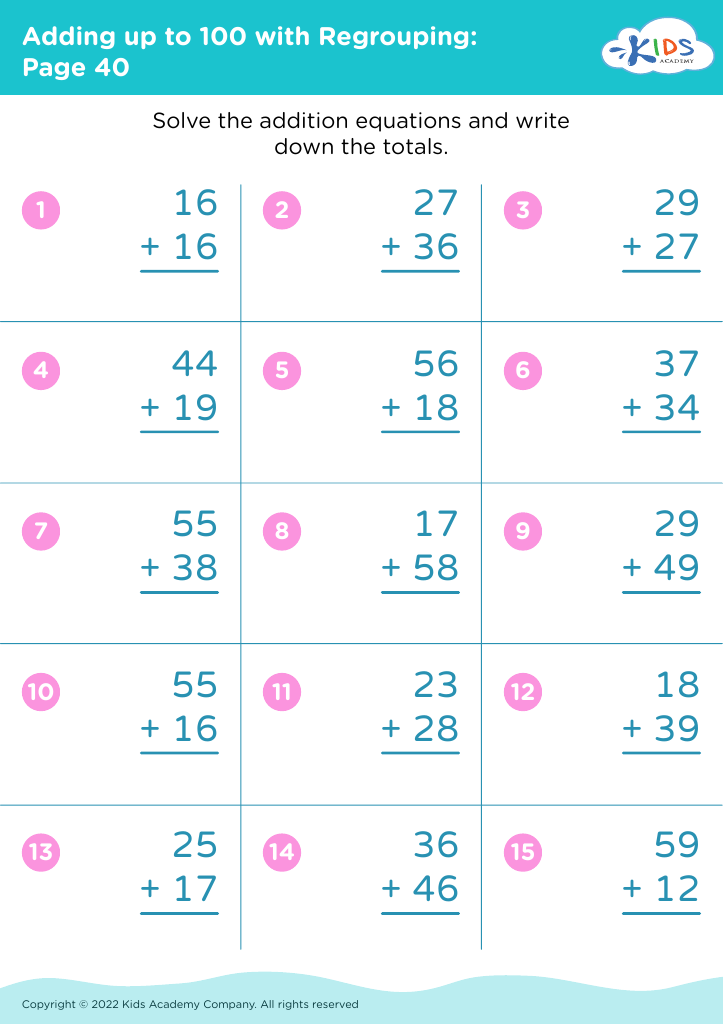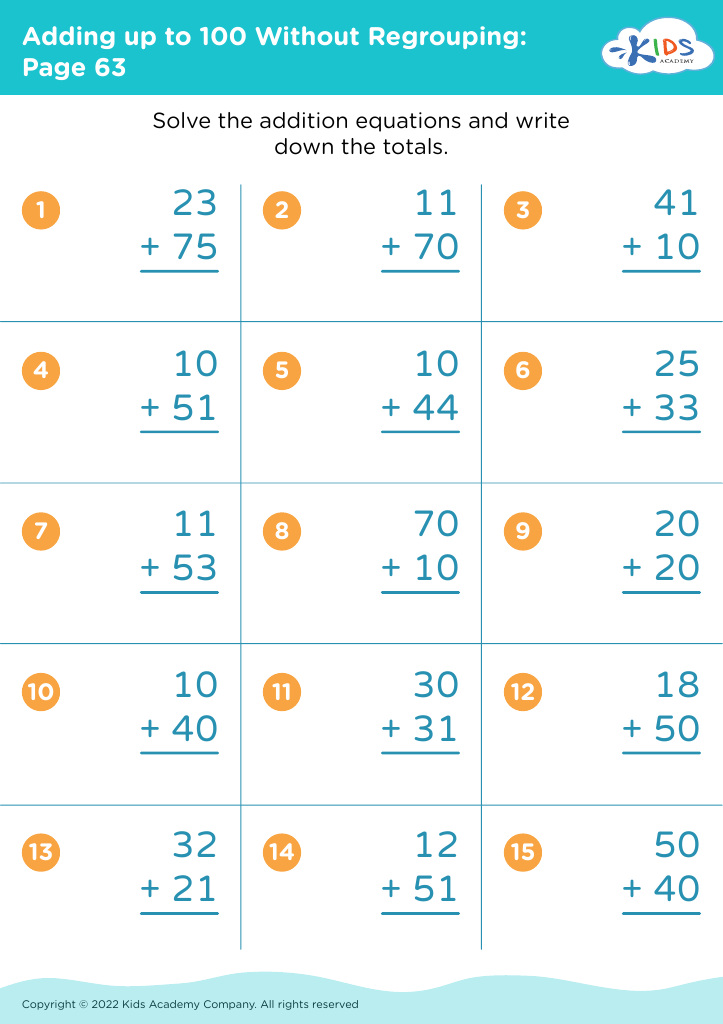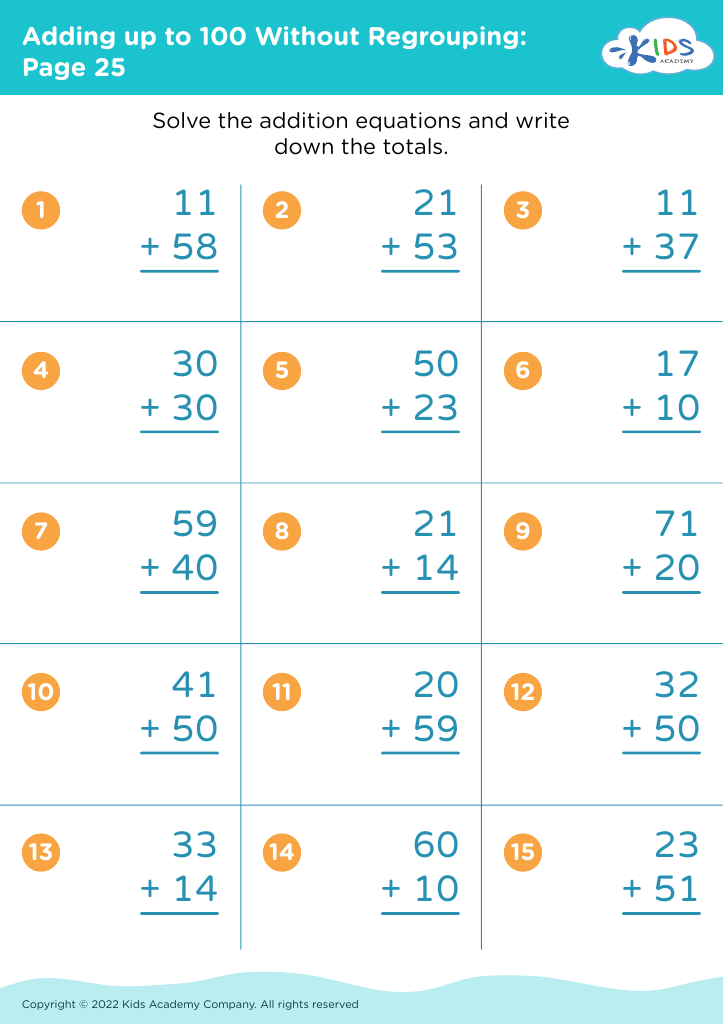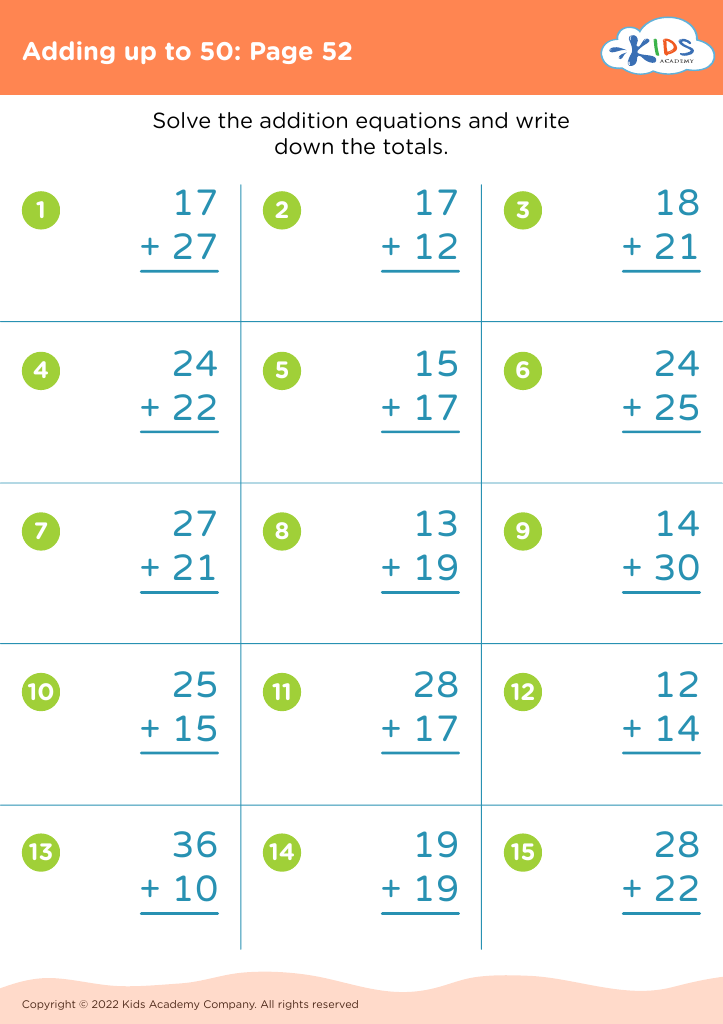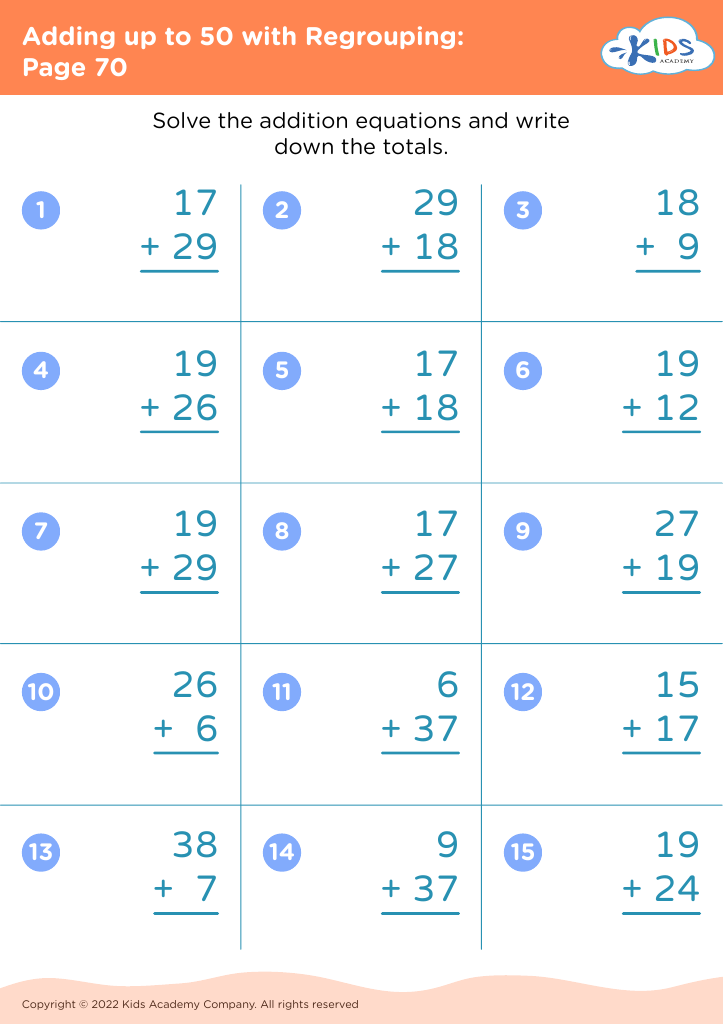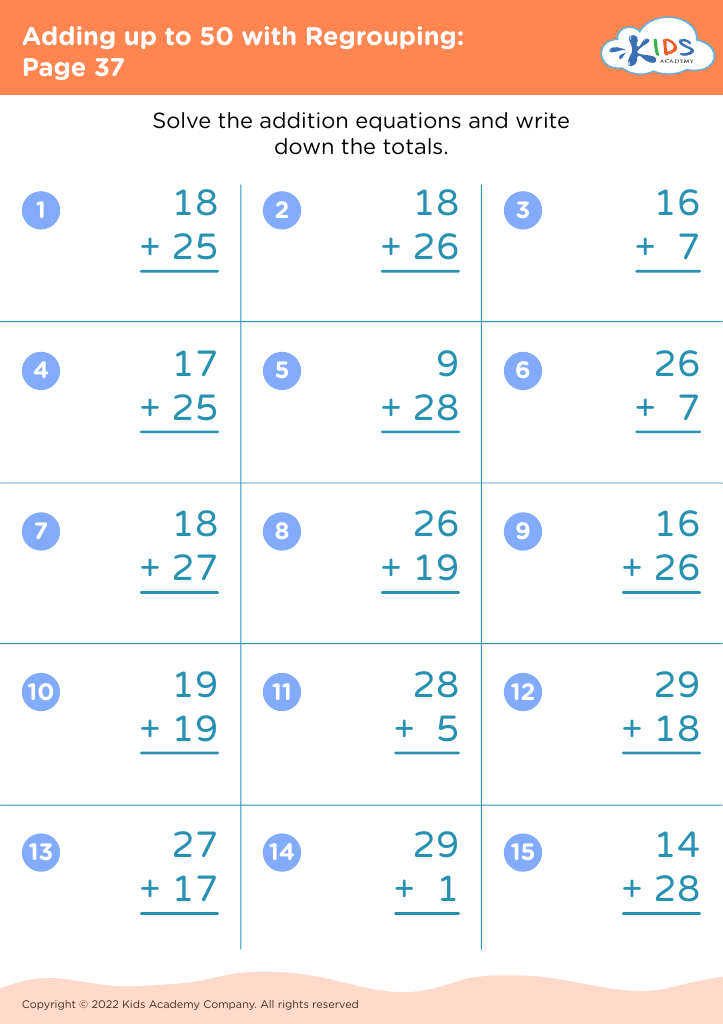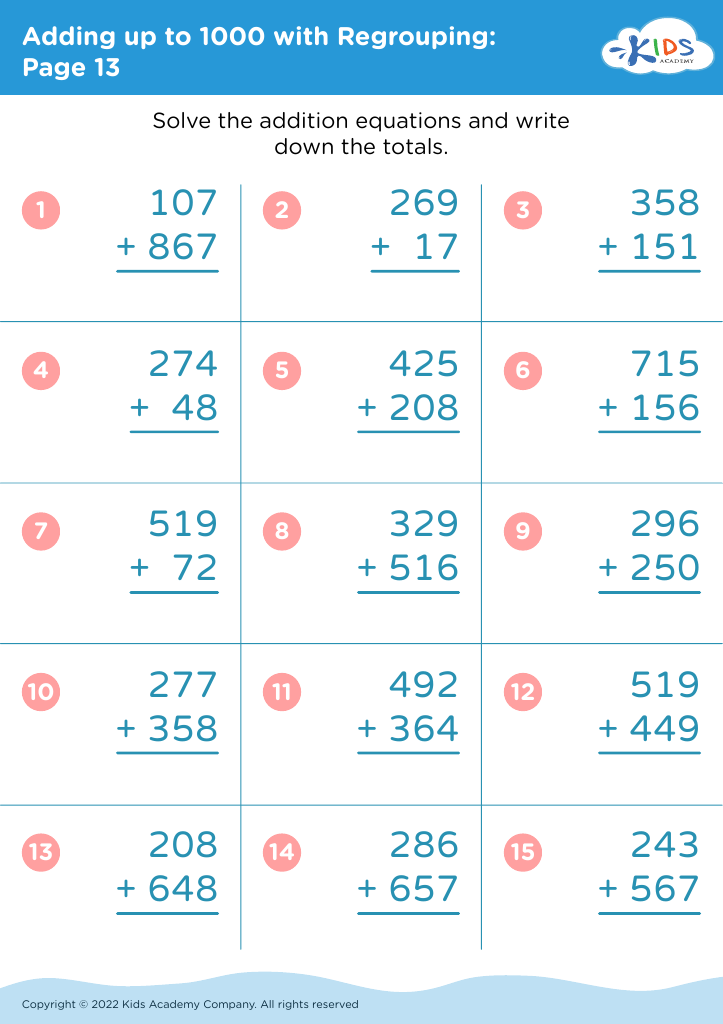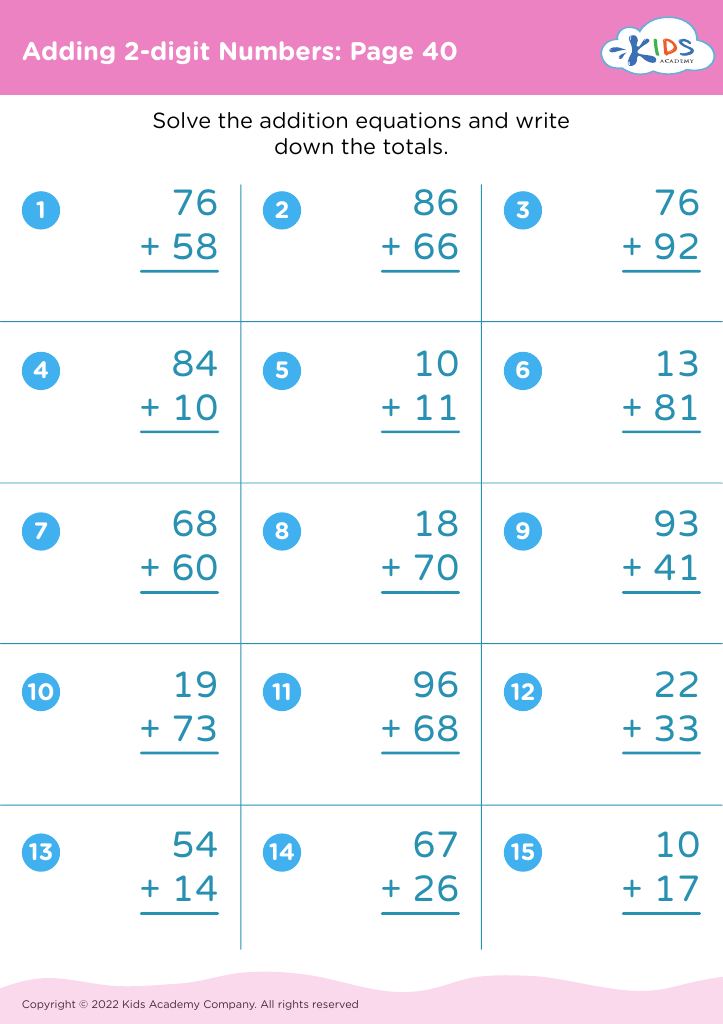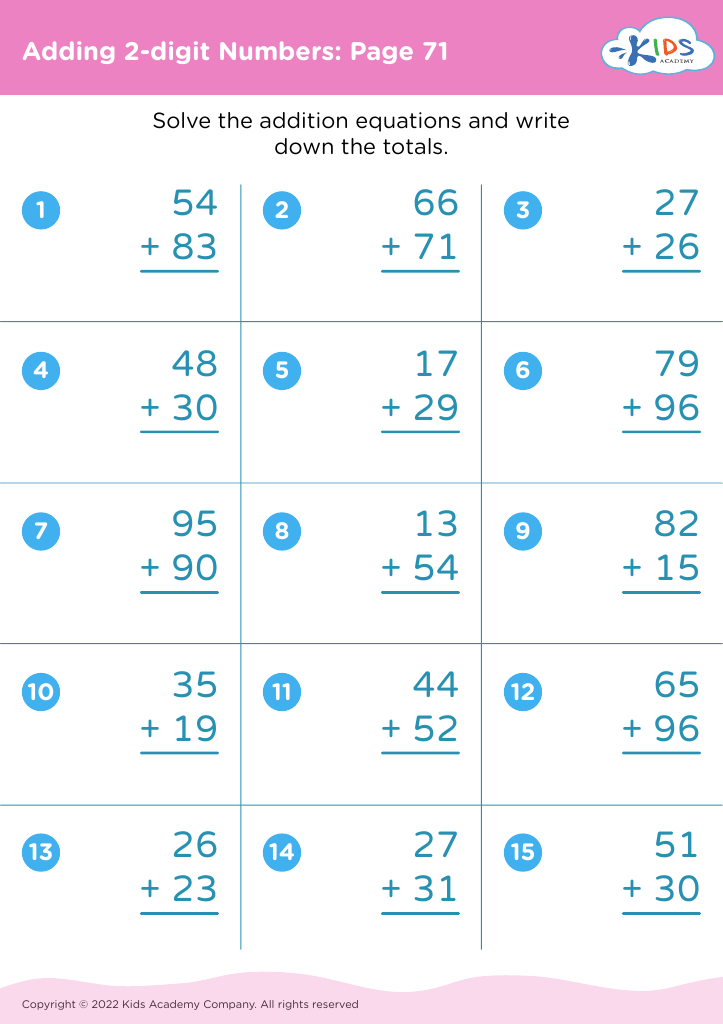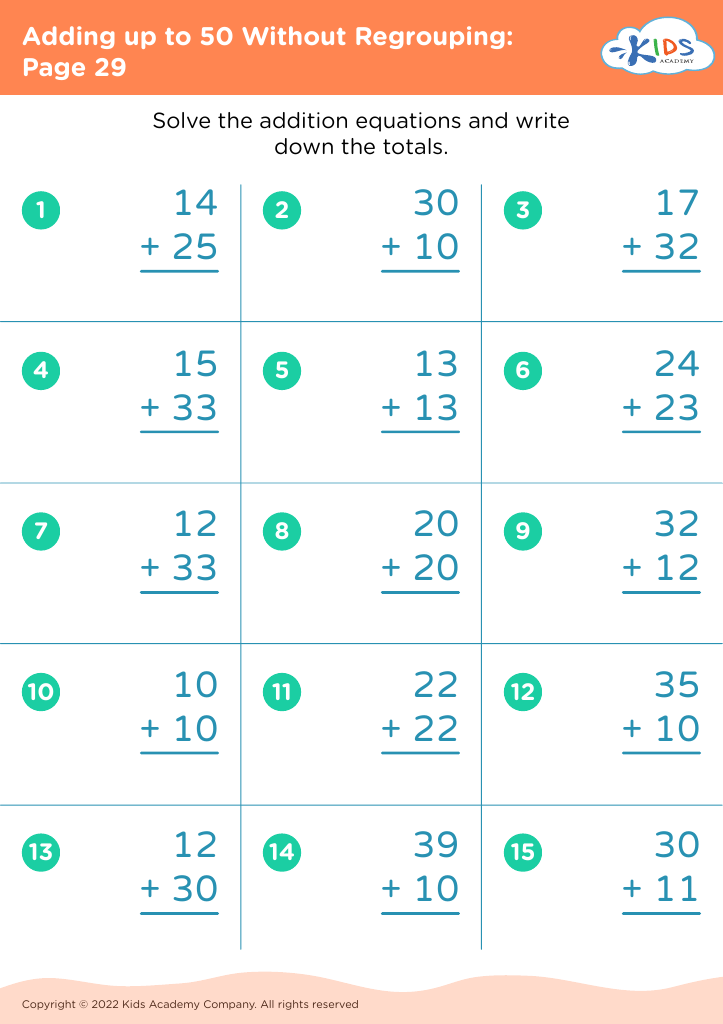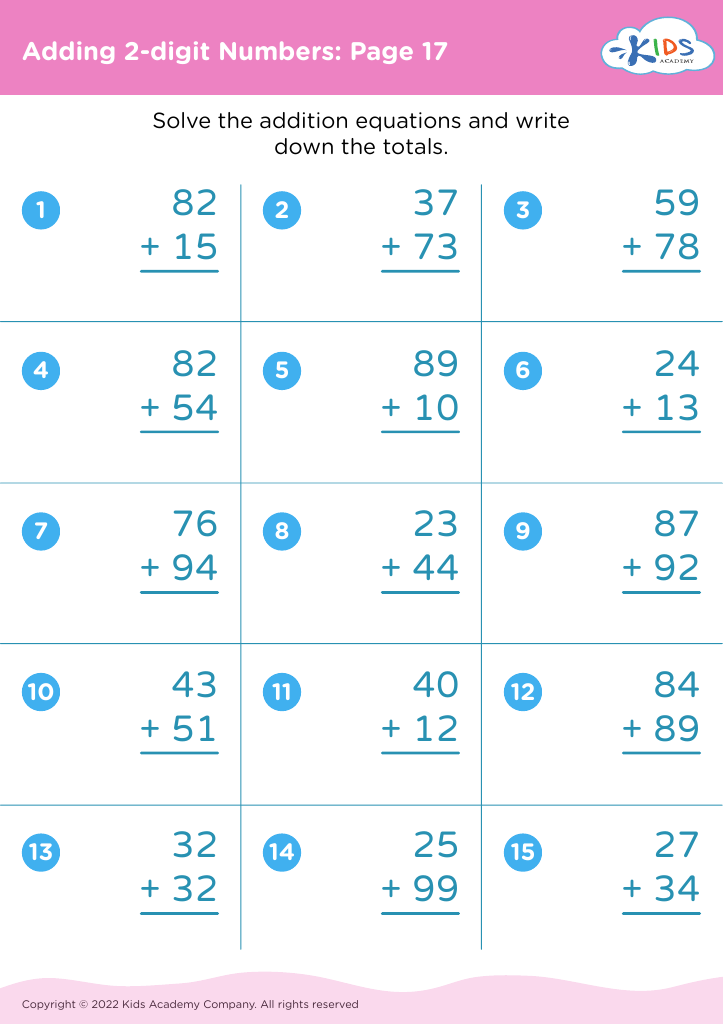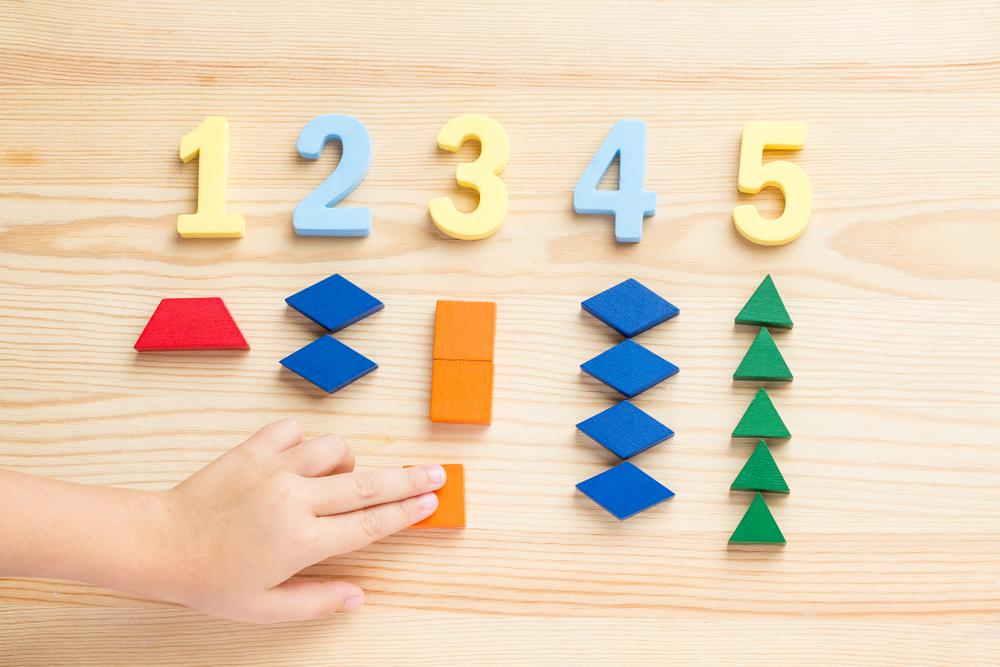Identifying shapes Worksheets for Ages 3-8
40 filtered results
-
From - To
Explore our "Identifying Shapes Worksheets for Ages 3-8," designed to make learning shapes fun and engaging! These printable worksheets are tailored to help young learners recognize and learn about various geometric shapes, including circles, squares, triangles, and more. Each worksheet features colorful illustrations and interactive activities that promote visual recognition, critical thinking, and fine motor skills. Ideal for preschool, kindergarten, and early elementary classrooms, our resources encourage creativity and foster a love for learning. Enhance your child's foundational math skills with our engaging and age-appropriate shape worksheets, ensuring they build confidence and competence in identifying shapes throughout their early education journey!
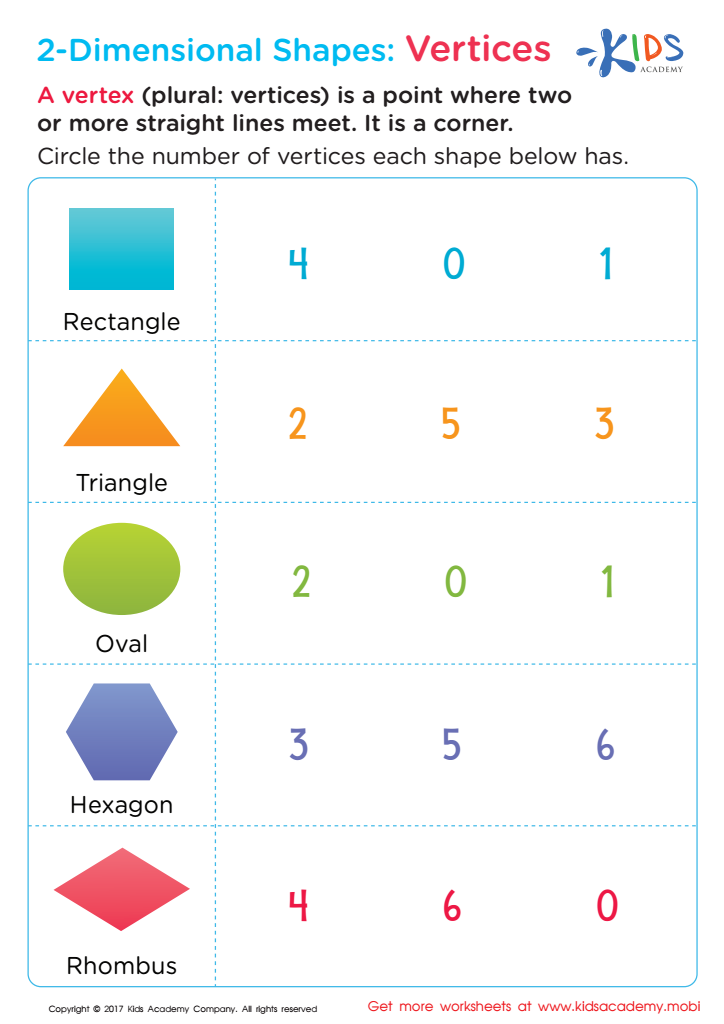

Two–Dimensional Shapes: Vertices Printable
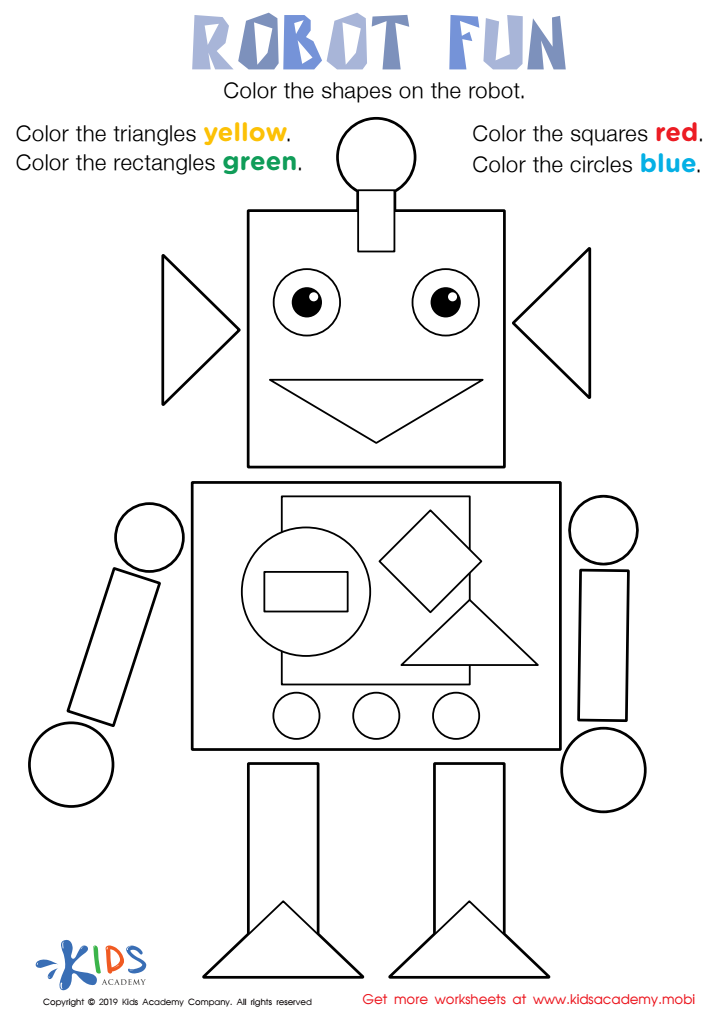

Robot Fun Worksheet


Drawing a Triangle Worksheet
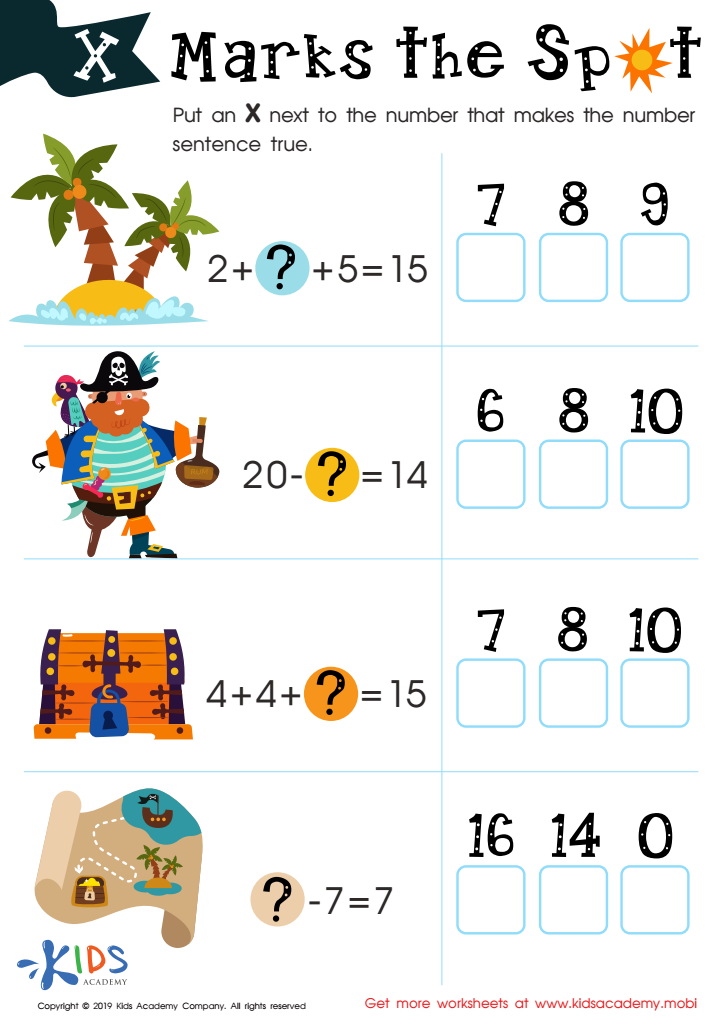

X Marks the Spot Worksheet
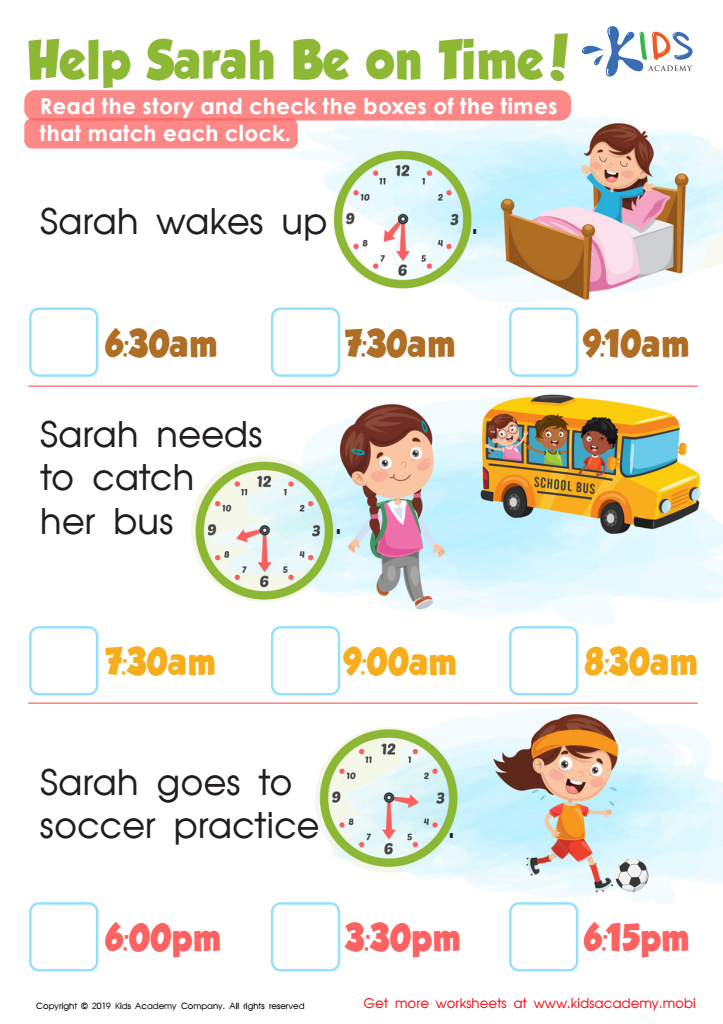

Help Sarah Be on Time! Worksheet
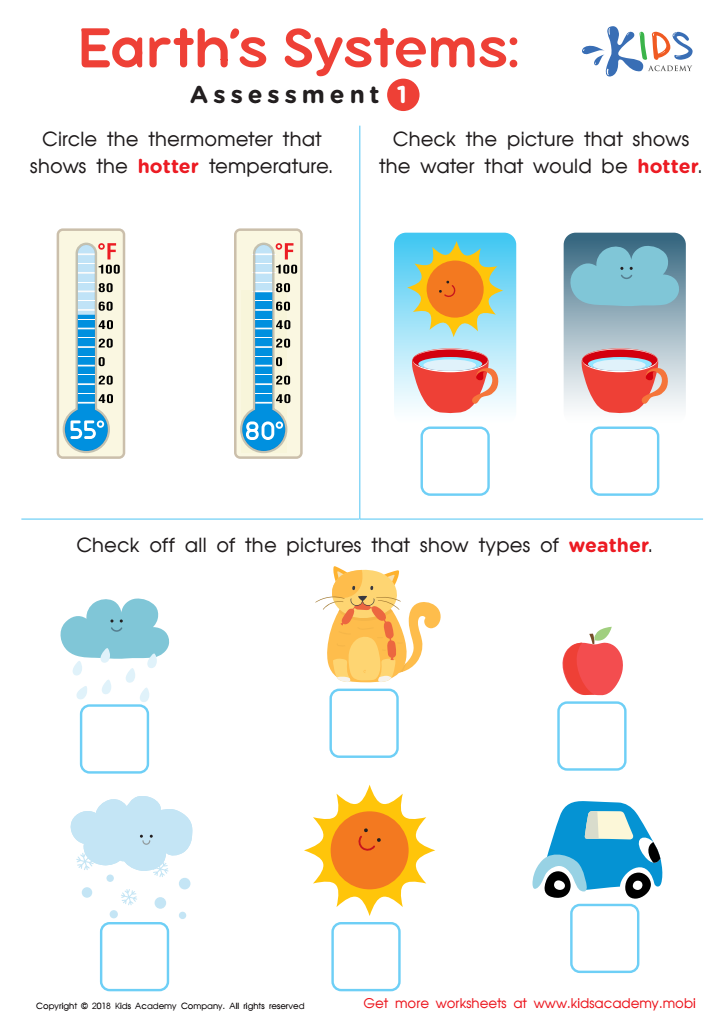

Earth's Systems: Assessment 1
Identifying shapes is a fundamental skill for children ages 3-8 that lays the foundation for various aspects of their cognitive and mathematical development. For parents and teachers, fostering shape recognition is essential as it enhances spatial awareness, critical thinking, and problem-solving abilities. Understanding shapes helps children make connections between the world around them and mathematical concepts. For instance, recognizing circles, squares, and triangles enables young learners to categorize objects, analyze patterns, and understand geometry.
Shape identification also contributes to language development, as children learn to articulate their observations and engage in discussions. Activities centered on shapes can promote fine motor skills, such as cutting, drawing, and assembling, which are crucial for writing readiness. Furthermore, integrating shapes into play offers an engaging way to grasp these concepts, making learning fun and interactive.
Educationally, familiarity with shapes prepares children for more complex mathematical ideas and fosters a love for learning. By prioritizing shape identification, parents and teachers can cultivate a child's confidence and curiosity, ultimately benefiting their academic journey in both math and other subjects, such as art and science, where shape recognition is crucial. Therefore, investing time in this area is vital for holistic childhood development.
 Assign to My Students
Assign to My Students

